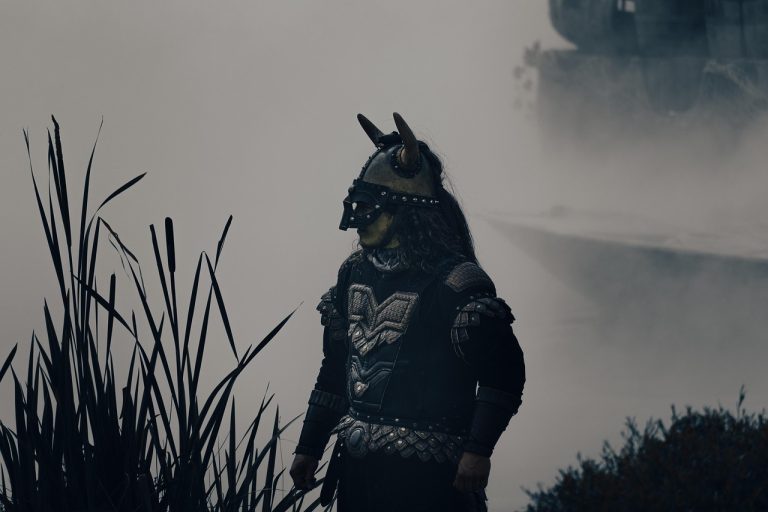Debunking the Myth: Did Vikings Wear Horned Helmets?
One of history’s most enduring images is that of a Viking clad in armor, brandishing a shield and wearing a fearsome horned helmet. This iconic look has been popularized by countless films, cartoons, and books. But did Vikings really wear horned helmets? In this detailed exploration, we will debunk this widely held myth and delve into what historians and archaeologists have discovered about Viking helmets and their attire.
Introduction to Viking Helmets
Before we tackle the main question head-on, let’s dive into a bit of background about the Vikings themselves. Originating from Scandinavia during the late 8th to early 11th centuries, Vikings were not just raiders and warriors as popular culture often portrays them; they were also traders, explorers, and settlers. The image of Vikings wearing horned helmets has become synonymous with their identity. However, this depiction is more fiction than fact.
The Origin of the Horned Helmet Myth
The misconception of Vikings wearing horned helmets can be traced back to the 19th-century revival of interest in Viking culture. During this period, artists and designers, inspired by the dramatic and mystical elements of Viking lore, began to depict Norse warriors with horns or wings on their helmets. This image was further popularized in the 1870s by costume designer Carl Emil Doepler, who created horned helmets for the first Bayreuth Festival production of Richard Wagner’s “Der Ring des Nibelungen,” a series of operas steeped in Old Norse mythology.
These visual representations captured the public’s imagination and have since become entrenched as historical fact in popular consciousness. However, there is scant evidence to suggest that Vikings ever wore horned helmets in battle or in any other context.
What Did Viking Helmets Look Like?
Archaeological findings have given us a clearer picture of true Viking helmets. The most famous of these is the Gjermundbu helmet, discovered in Norway in 1943. This well-preserved artifact dates back to the 10th century and features a rounded iron cap, a guard around the eyes and nose, and even remnants of chain mail for additional protection. Notably, it bears no horns.
Most Viking helmets were likely made of iron and designed to withstand blows from swords, axes, and other weapons typical of the period. The construction was practical and robust—features necessary for the harsh realities of Viking life and warfare. They were engineered to provide maximum protection and functionality, not flamboyance.
Why the Horned Helmet Wouldn’t Be Practical
From a practical standpoint, wearing horned helmets in battle would have been more of a hindrance than a help. The horns could catch on things, impede movement, or get grabbed by opponents during close combat. Moreover, the additional weight and imbalance could have made fighting more cumbersome. These facts further support the argument against the historical accuracy of horned Viking helmets.
Impact of This Myth on Our Understanding of Vikings
The myth of the Viking horned helmet has somewhat skewed modern perceptions of the Viking era—an important period that saw not only raids and battles but also significant cultural exchanges and developments. While the image of a horned helmet is undoubtedly striking and theatrical, it does not accurately reflect the Vikings’ technological and societal advancements.
FAQs: Debunking the Myth: Did Vikings Wear Horned Helmets?
Q: Where did Vikings really wear their helmets?
A: Vikings wore helmets primarily in battle. Authentic Viking helmets were designed to be functional and protect the head during combat.
Q: Are there any historical paintings or artifacts that show Vikings wearing horned helmets?
A: There are no contemporary depictions or archaeological finds that conclusively show Vikings wearing horned helmets. The imagery popular today originated from 19th-century artistic interpretations.
Q: What materials were Viking helmets made from?
A: Viking helmets were primarily made from iron. The Gjermundbu helmet, for instance, is an excellent example of typical Viking helmet construction.
Q: How does the depiction of Vikings in popular culture differ from historical reality?
A: Popular culture often emphasizes the more brutal aspects of Viking raids and warfare, largely ignoring their roles as traders, farmers, and explorers. Also, the fanciful addition of horned helmets adds a layer of myth that distorts our understanding of Viking culture.
Conclusion
Debunking the myth: Did Vikings wear horned helmets? The answer is a resounding “no.” Although the image of a Viking warrior adorned with a horned helmet is indelibly etched into popular culture, historical evidence firmly counters this portrayal. Understanding such myths and examining the facts help us gain a more nuanced appreciation of the Viking era—a testament to the complex and rich history of the Norse people. By continuing to explore and question these long-held myths, we foster a deeper understanding of history free from exaggerated theatrics.


